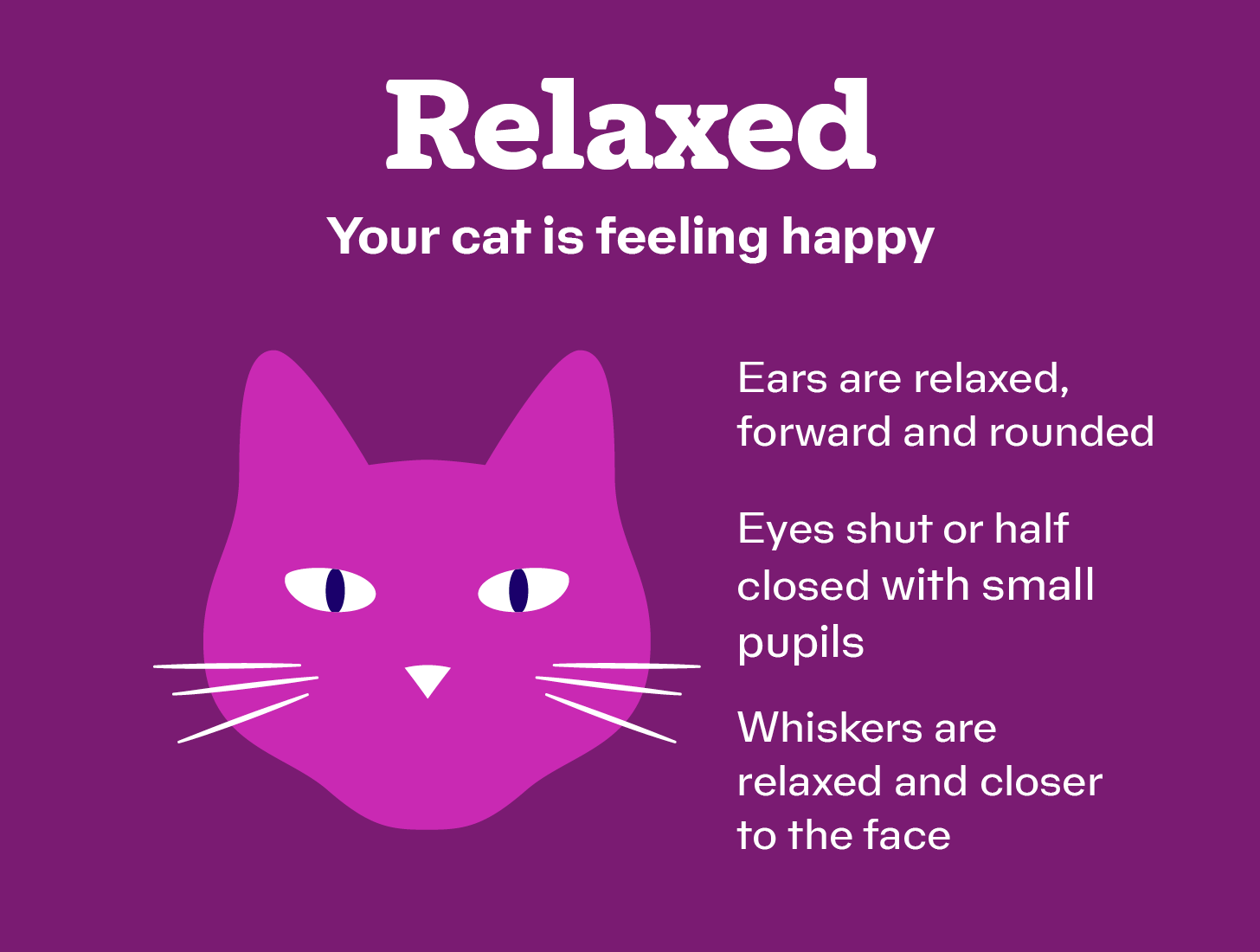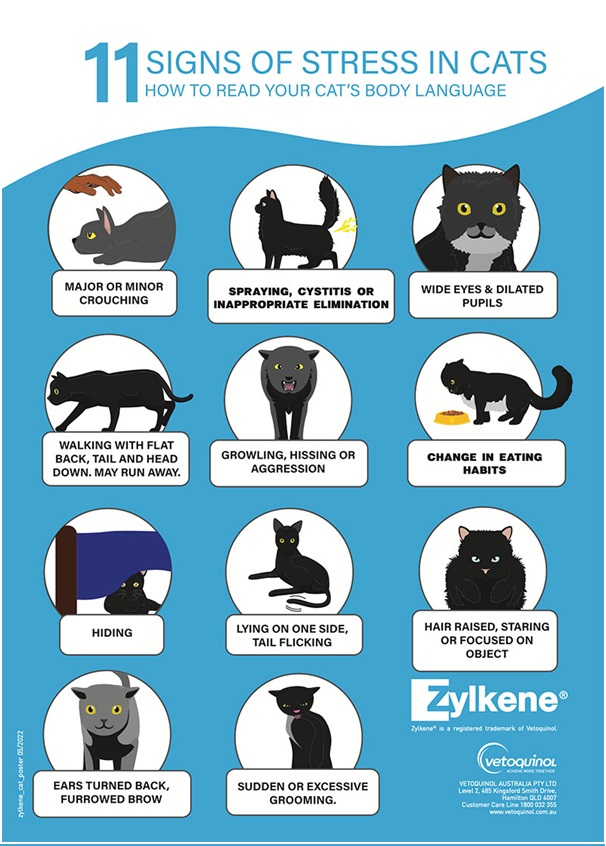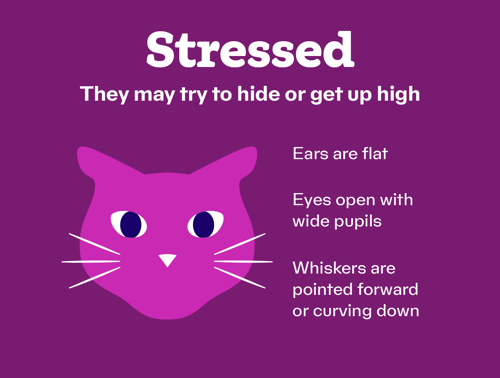Your cat is more than just a pet; they’re a cherished member of your family, offering companionship and comfort in their unique feline way. But just like humans, cats can experience stress.
This stress can be triggered by a variety of factors—changes in environment, new family members, or even something as simple as a shift in routine. Recognizing the signs of stress in your cat is crucial for their well-being, and it can prevent potential health issues down the line.
You’ll discover the subtle and not-so-subtle signs that your cat might be stressed. We’ll guide you through the common behaviors and physical symptoms to watch for, helping you ensure your furry friend feels safe and happy. Whether you’re a seasoned cat owner or new to the world of feline companionship, understanding your cat’s emotional health is key to maintaining their happiness and your peace of mind. By the end of this read, you’ll be equipped with the knowledge to spot stress early, offering your cat the comfort and support they need. After all, a happy cat means a happy home. Stay with us as we unravel the mysteries of feline stress and share practical tips to soothe your beloved pet.

Credit: www.banfield.com
Behavioral Changes
Cats may show stress through changes in behavior like excessive grooming or hiding. Watch for signs like decreased appetite and increased aggression. Understanding these signals helps in addressing your cat’s needs effectively.
Understanding your cat’s behavioral changes can be key to identifying stress. Cats, like humans, exhibit certain behaviors when they’re anxious or uncomfortable. Recognizing these changes early can help you address the root cause and ensure your feline friend remains happy and healthy. Let’s delve into some common behavioral changes that may indicate stress in cats.
Aggression Or Withdrawal
Has your once-cuddly cat suddenly started swatting at you? Or perhaps they’re hiding more than usual? These changes can be signs of stress. Cats might become aggressive towards other pets or even humans if they’re feeling overwhelmed or threatened. Conversely, some cats may withdraw, avoiding social interaction and spending more time alone. Have you noticed your cat ignoring their favorite toys or food? Observing these shifts in behavior can provide valuable insights into your cat’s emotional state.
Excessive Grooming
Is your cat grooming more than usual? While it’s normal for cats to clean themselves, excessive grooming can be a red flag. This behavior might manifest as your cat licking a particular spot on their body until the fur is thin or even causing skin irritation. It’s their way of coping with stress, much like how some people bite their nails. Pay attention to these grooming habits. Could there be an environmental change or a new pet that’s causing this stress? Identifying the source can help you take steps to make your cat more comfortable. Addressing these behavioral changes promptly can improve your cat’s quality of life. What steps will you take today to ensure your cat feels safe and secure?
Physical Indicators
Cats are sensitive creatures. Stress can affect their physical health. Understanding physical indicators helps in identifying stress. Observing these signs is crucial for your cat’s well-being.
Changes In Appetite
A stressed cat may eat less. Sometimes, they might eat more. This shift can be sudden or gradual. It’s important to monitor food intake. An empty food bowl may signal stress.
Notice any weight changes. Weight loss or gain indicates stress. Consult a vet if the appetite issue persists. They can provide guidance.
Altered Sleep Patterns
Stress can disrupt sleep. Cats might sleep more than usual. They could also sleep less. Changes in sleep are a red flag. Observe your cat’s sleeping habits.
A stressed cat may sleep in unusual spots. This behavior indicates discomfort. Ensure their sleeping area is calm. A peaceful environment helps alleviate stress.
Vocalization Variations
Understanding your cat’s vocalization variations can be key in identifying stress. Cats communicate through sounds, and changes in their vocal patterns might signal distress or discomfort. You might notice your cat expressing itself differently than usual, and it’s essential to pay attention to these shifts.
Increased Meowing
Has your normally quiet cat turned into a chatterbox? An increase in meowing can be a sign of stress. Cats often vocalize more when they’re anxious or seeking attention. You might find them following you around the house, meowing loudly and persistently.
Consider the context of this meowing. Are there new changes in your home? Perhaps a new pet, a change in schedule, or even a recent move. These factors can contribute to your cat’s increased vocalization.
Try to recall if you’ve experienced a similar situation. Remember how your cat reacted when you first brought home a new couch? It spent hours meowing at it, circling it like a suspicious detective. Cats thrive on routine, and disruptions can lead to stress vocalizations.
Unusual Sounds
Stress can make your cat produce sounds you rarely hear. Have you noticed growling, hissing, or even yowling? These sounds are typically associated with fear or discomfort. Pay attention to these unusual noises as they can be your cat’s way of telling you something is wrong.
If your cat starts making unfamiliar sounds, take a moment to assess its environment. Is there a potential threat, like a neighborhood cat lurking outside the window, or a noisy construction site nearby? Identifying the source can help you address the stress.
Think back to when your cat first heard the vacuum cleaner. The strange sound likely triggered a reaction, maybe even a hiss or growl. Just like humans can be startled by unexpected noises, cats can find certain sounds distressing.
As a cat owner, it’s crucial to be observant. Vocalization variations can often be the first clue in understanding your cat’s emotional state. What changes have you noticed in your cat’s vocal patterns lately? Could they be trying to tell you something important?

Credit: www.cats.org.uk
Litter Box Issues
Cats can show stress through litter box issues. Watch for sudden changes in bathroom habits. Frequent accidents or avoiding the box might signal your cat is feeling anxious or stressed.
Cats often express stress through changes in their litter box behavior. Litter box issues are a common sign of feline anxiety. Understanding these changes can help address your cat’s needs. Let’s explore the key signs.
Avoidance Of Litter Box
A stressed cat might avoid using the litter box. They may choose other areas to relieve themselves. This behavior often reflects discomfort or anxiety. Cats are creatures of habit. Sudden changes in their routine signal distress. A clean and accessible litter box can encourage normal use. Pay attention to their preferences.
Frequent Urination
Stress can lead to frequent urination in cats. They may urinate more often than usual. This behavior might be a physical reaction to stress. It could also indicate a medical issue. Observe the frequency and volume of urination. Changes in these patterns could point to an underlying problem. Consulting a vet can provide clarity.
Environmental Factors
Environmental changes can signal cat stress. Notice hiding or decreased appetite. These behaviors might indicate your cat feels uneasy.
Cats, like humans, can feel stress due to environmental factors. Your cat’s surroundings play a significant role in their well-being. As a cat parent, understanding these factors can help you create a peaceful atmosphere for your feline friend. Let’s delve into how changes in their environment and the presence of new pets can affect your cat’s stress levels.
Changes In Home Environment
A shift in your home environment can unsettle your cat. Imagine how you feel when your furniture is suddenly rearranged or when you move to a new house. Cats thrive on familiarity and routine. Even minor changes, like new decor or a different feeding spot, can make your cat anxious. Consider your cat’s perspective. If you’ve recently redecorated or added new furniture, keep an eye on your feline friend. Are they avoiding certain areas? Do they seem more skittish or hide more often? These could be signs of stress due to changes in their surroundings. Consistency is key. If changes are necessary, introduce them gradually. Let your cat explore new items at their own pace. Offer treats or toys to help them associate positive experiences with new aspects of their environment. How do you ensure your home remains a sanctuary for your cat amidst changes?
Presence Of New Pets
Introducing a new pet can be exciting for you, but it might be overwhelming for your cat. Cats can be territorial and might view a new pet as a threat. The sudden presence of another animal can disrupt their sense of security. Observe your cat’s behavior around new pets. Are they more aggressive or withdrawn? Do they spend more time away from communal spaces? These reactions may indicate stress. Gradual introductions are crucial. Allow your cat to become familiar with the new pet’s scent before any face-to-face meetings. Create separate spaces initially and observe their interactions closely. How can you balance your attention between your existing cat and a new pet? By understanding these environmental factors, you can take proactive steps to minimize stress and ensure your cat remains happy and healthy. Remember, a little attention to your cat’s environment goes a long way in maintaining their peace of mind.
Health Concerns
Understanding your cat’s stress levels is crucial for their well-being. Stress can lead to various health concerns, affecting their overall quality of life. Recognizing these health issues can help you address stress in your feline friend promptly. Below are key health concerns to watch out for in stressed cats.
Digestive Problems
Stressed cats often develop digestive issues. They may vomit more frequently or experience diarrhea. You might notice a change in their eating habits. Cats could eat less or refuse food altogether. This can lead to weight loss and nutritional deficiencies. Monitor your cat’s litter box habits. Any significant change might indicate stress. Consult a vet if digestive problems persist.
Skin Conditions
Stress can manifest as skin problems in cats. Excessive grooming or scratching may occur. This can lead to bald spots or skin lesions. Your cat might have a dull coat or flaky skin. These symptoms often point to stress-related skin issues. It’s important to rule out other causes first. Fleas or allergies might also cause skin conditions. A vet can help determine the exact cause.
Stress Management
Notice changes in your cat’s behavior to spot stress. Hiding often, eating less, or grooming excessively can be signs. Understanding these cues helps in managing your cat’s stress effectively.
Stress management for your feline friend is crucial to ensure their well-being and happiness. Cats, like humans, can experience stress for various reasons. This could be due to environmental changes, health issues, or even boredom. Understanding how to help your cat manage stress can improve their quality of life and strengthen your bond with them.
Creating A Safe Space
Creating a safe space for your cat is an essential part of stress management. Cats need a haven where they feel secure and can retreat when they feel overwhelmed. Consider a cozy corner with a soft bed, a few toys, and a scratching post. Think about the areas in your home where your cat spends most of their time. These are likely their preferred safe zones. By ensuring these areas are quiet and comfortable, you provide them with a sense of security. Have you ever noticed your cat hiding during a noisy gathering? That’s a clear indication of their need for a peaceful environment.
Regular Playtime
Regular playtime is another vital component of stress management for your cat. Engaging your cat in play not only helps to alleviate stress but also provides much-needed physical exercise. Use toys that mimic prey, like feather wands or laser pointers, to stimulate their hunting instincts. Playing with your cat for just 15 minutes a day can make a significant difference. It’s not only a stress reliever for them but also a fantastic bonding opportunity for you. Remember the last time you saw your cat pounce and chase with excitement? That’s the joy of stress-free play.
Incorporating these stress management strategies can significantly enhance your cat’s life. What steps will you take today to ensure your cat remains happy and stress-free?
Seeking Professional Advice
Your cat’s behavior seems off, and you’re starting to worry. Is your feline friend stressed? While some signs can be addressed at home, others might require professional advice. Seeking expert help can ensure your cat’s well-being and peace of mind for you. Let’s explore the importance of consulting a veterinarian and the potential of behavioral therapy options.
Consulting A Veterinarian
When your cat exhibits unusual behaviors, such as excessive grooming or hiding, it’s time to consider consulting a veterinarian. They can offer insights that you might miss. A vet will conduct a thorough examination to rule out medical issues that may be causing stress.
Have you ever been anxious about your cat’s sudden aggression? A vet can diagnose underlying health problems, such as pain or illness, that might be triggering this behavior. Their expertise ensures your cat gets the necessary care to alleviate stress.
Don’t hesitate to share your observations. Your detailed account helps the vet pinpoint the issue. What have you noticed? A comprehensive discussion can lead to a tailored treatment plan for your furry companion.
Behavioral Therapy Options
Sometimes, stress stems from behavioral issues. Have you considered behavioral therapy for your cat? These therapeutic strategies can address anxiety and stress by modifying unwanted behaviors.
Imagine your cat is scratching furniture out of anxiety. Behavioral therapy can redirect this energy in positive ways. Techniques such as positive reinforcement can be effective, teaching your cat healthier habits.
Consulting a pet behaviorist can be valuable. They specialize in understanding animal behavior and can offer practical solutions. Would you be open to trying structured activities or environmental changes to reduce stress?
Seeking professional advice is not just about treating symptoms. It’s about ensuring your cat leads a happy, stress-free life. Are you ready to take the next step for your feline friend’s well-being?

Credit: keysivet.com.au
Frequently Asked Questions
How To Deal With A Stressed Cat?
Calm your stressed cat by creating a quiet environment. Provide hiding spots and soothing music. Use pheromone diffusers to promote relaxation. Engage in gentle play to distract and comfort. Ensure a consistent routine for feeding and cleaning. Consult a vet if stress persists.
How Long Does It Take For Cats To Get Over Stress?
Cats usually take a few days to a few weeks to recover from stress. Factors like environment, personality, and the cause of stress can influence recovery time. Providing a calm and secure environment helps accelerate their adjustment and well-being.
What Are Signs Of Stress In A Cat?
Cats show stress through hiding, excessive grooming, or aggression. They might lose appetite or vocalize more. Changes in litter box habits and increased scratching can also indicate stress. Look for dilated pupils and a twitching tail. Recognizing these signs helps in addressing your cat’s needs effectively.
Do Cats Sleep When Stressed?
Yes, cats often sleep more when stressed. They may seek comfort through rest. Observing their behavior helps identify stress. Providing a calm environment can reduce their stress levels.
Conclusion
Recognizing stress in your cat improves their happiness and health. Look for changes in behavior or appetite. Also, observe any unusual hiding or aggression. Small changes in the environment can help ease their stress. Try interactive toys or create a quiet space.
Always ensure access to fresh water and a balanced diet. Regular vet check-ups catch health issues early. Building a strong bond through play and love is vital. Your cat’s well-being depends on your awareness and care. Stay attentive, and ensure your feline friend feels safe and loved.
A stress-free cat means a happy home.
